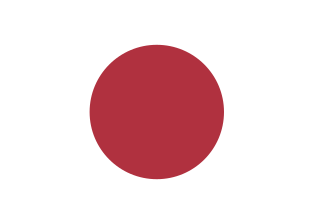 W
WThe Japanese Empire occupied the Dutch East Indies, during World War II from March 1942 until after the end of the war in September 1945. In Indonesian history, the period was one of the most critical.
 W
WThe Battle of Borneo was a successful campaign by Japanese Imperial forces for control of Borneo island and concentrated mainly on the subjugation of the Raj of Sarawak, Brunei, North Borneo, and the western part of Kalimantan that was part of the Dutch East Indies. The Japanese main unit for this mission was the 35th Infantry Brigade led by Major-General Kiyotake Kawaguchi.
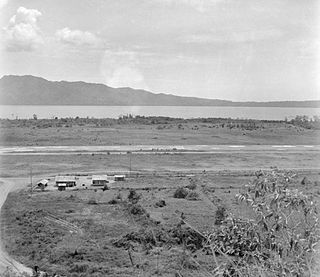 W
WThe Battle of Ambon occurred on the island of Ambon in the Dutch East Indies, during World War II. Japan invaded and conquered the island in a few days, facing Dutch, American and Australian forces. The chaotic and sometimes bloody fighting was followed by a series of major Japanese war crimes.
 W
WThe Battle of Balikpapan was the concluding stage of Operation Oboe, the campaign to liberate Japanese-held British and Dutch Borneo. The landings took place on 1 July 1945. The Australian 7th Division, composed of the 18th, 21st and 25th Infantry Brigades, with a small number of Netherlands East Indies KNIL troops, made an amphibious landing, codenamed Operation Oboe Two, a few miles north of Balikpapan. The Allied invasion fleet consisted of around 100 ships. The landing had been preceded by heavy bombing and shelling by Australian and US air and naval forces. The Allied force totalled 33,000 personnel and was commanded by Major General Edward Milford, while the Japanese force, commanded by Rear Admiral Michiaki Kamada, numbered between 8,400 and 10,000, of which between 3,100 and 3,900 were combatants. After the initial landing, the Allies secured the town and its port, and then advanced along the coast and into the hinterland, capturing the two Japanese airfields. Major combat operations concluded around 21 July, but were followed by mopping-up operations, which lasted until the end of the war in mid-August. Australian troops remained in the area until early 1946.
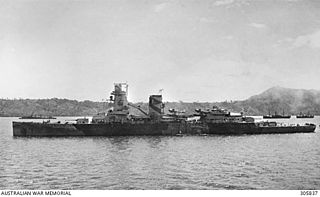 W
WThe Battle of Badung Strait was a naval battle of the Pacific campaign of World War II, fought on the night of 19/20 February 1942 in Badung Strait between the American-British-Dutch-Australian Command (ABDA) and the Imperial Japanese Navy. In the engagement, the four Japanese destroyers defeated an Allied force that outnumbered and outgunned them, sinking the Dutch destroyer Piet Hein and escorting two transports to safety. The battle demonstrated the Japanese Navy's considerable superiority over the Allies in night fighting which lasted until the Battle of Cape St. George.
 W
WThe Battle of Banjarmasin took place as part of the Japanese offensive to capture the Dutch East Indies. The Japanese conducted a pincer attack from sea and land to capture a strategic airfield in Banjarmasin in preparation for the capture of Java Island.
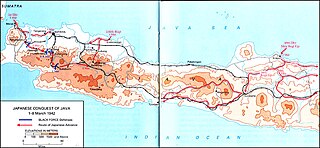 W
WThe Battle of Java was a battle of the Pacific theatre of World War II. It occurred on the island of Java from 28 February – 12 March 1942. It involved forces from the Empire of Japan, which invaded on 28 February 1942, and Allied personnel. Allied commanders signed a formal surrender at Japanese headquarters at Bandung on 12 March.
 W
WThe Battle of Kalijati was a battle which occurred between 1 and 3 March 1942 during the Dutch East Indies campaign between invading Japanese forces and the Dutch colonial forces. It was fought over control of the Kalijati Airfield in Subang.
 W
WThe Battle of Kendari took place on 24 January 1942 as part of the Japanese offensive in the Dutch East Indies. The airfield Kendari II became an essential target for Japanese forces for its strategic location and infrastructure quality. Encountering little to no resistance, Japanese troops managed to capture the airfield in one day, as the disorganized Dutch defenders were already in retreat inland.
 W
WThe Battle of Leuwiliang was a battle during the Dutch East Indies campaign of the Pacific War that took place between 3 and 5 March 1942. Australian forces, supported by American artillery batteries and British tanks, launched a holding action starting at Leuwiliang, West Java, in order to cover the retreat of allied Dutch forces in face of the Japanese invasion of Java.
 W
WThe Battle of Makassar Strait, also known as the Action of Madura Strait, the Action North of Lombok Strait and the Battle of the Flores Sea, was a naval battle of the Pacific theater of World War II. An American-British-Dutch-Australian (ABDA) fleet—under Schout-bij-nacht Karel Doorman—was on its way to intercept a Japanese invasion convoy reported as bound for Surabaya, when it was attacked by 36 Mitsubishi G4M1 "Betty" and 24 Mitsubishi G3M2 "Nell" medium bombers, which forced the fleet to retreat.
 W
WThe Battle of Samarinda was a mopping up operation in the series of the Japanese offensive to capture the Dutch East Indies. After capturing the oil refineries at Balikpapan, Japanese forces advanced north to capture the strategic oil drilling site in and around Samarinda and the oil pipelines that linked both cities.
 W
WThe Battle of Tarakan took place on 11–12 January 1942, a day after the Empire of Japan declared war on the Kingdom of the Netherlands. Although Tarakan was only a small marshy island off northeastern Borneo in the Netherlands East Indies, its 700 oil wells, refineries, and airfield made it a crucial objective for Japan in the Pacific War.
 W
WThe Battle of Tjiater Pass was a battle which occurred between 5 and 7 March 1942 during the Dutch East Indies campaign between invading Japanese forces and the Dutch colonial forces, supported by warplanes from the Royal Air Force. It was fought over control of the Tjiater Pass, as part of an attempted defense of the city of Bandung.
 W
WThe Borneo campaign of 1945 was the last major Allied campaign in the South West Pacific Area during World War II to liberate Japanese-held British Borneo and Dutch Borneo. Designated collectively as Operation Oboe, a series of amphibious assaults between 1 May and 21 July were conducted by the Australian I Corps, under Lieutenant-General Leslie Morshead, against Imperial Japanese forces who had been occupying the island since late 1941 – early 1942. The main Japanese formation on the island was the Thirty-Seventh Army under Lieutenant-General Masao Baba, while the naval garrison was commanded by Vice-Admiral Michiaki Kamada. The Australian ground forces were supported by US and other Allied air and naval forces, with the US providing the bulk of the shipping and logistic support necessary to conduct the operation. The campaign was initially planned to involve six stages, but eventually landings were undertaken at four locations: Tarakan, Labuan, North Borneo and Balikpapan. Guerilla operations were also carried out by Dayak tribesmen and small numbers of Allied personnel in the interior of the island. While major combat operations were concluded by mid-July, mopping-up operations continued throughout Borneo until the end of the war in August. Initially intended to secure vital airfields and port facilities to support future operations, preparatory bombardment resulted in heavy damage to the island's infrastructure, including its oil production facilities. As a result, the strategic benefits the Allies gained from the campaign were negligible.
 W
WThis is the complete order of battle of Allied and Japanese forces during the Borneo campaign of 1945. As the campaign was fought in three geographically separate areas and the same air and naval units supported more than one of these battles the order of battle is split into the three areas.
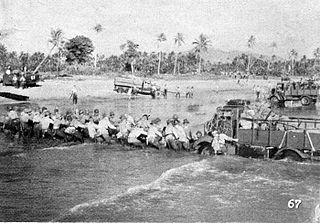 W
WThe Dutch East Indies campaign of 1941–1942 was the conquest of the Dutch East Indies by forces from the Empire of Japan in the early days of the Pacific campaign of World War II. Forces from the Allies attempted unsuccessfully to defend the islands. The East Indies were targeted by the Japanese for their rich oil resources which would become a vital asset during the war. The campaign and subsequent three and a half year Japanese occupation was also a major factor in the end of Dutch colonial rule in the region.
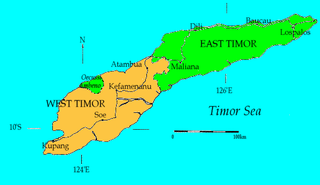 W
WWest Timor is an area covering the western part of Timor island, except for the district of Oecussi-Ambeno. Administratively, West Timor is part of East Nusa Tenggara Province, Indonesia. The capital as well as its main port is Kupang. During the colonial period, the area was named Dutch Timor and was a centre of Dutch loyalists during the Indonesian National Revolution (1945–1949). From 1949 to 1975 it was named Indonesian Timor.
 W
WThe Invasion of Sumatra was the assault by Imperial Japanese forces on the Dutch East Indies that took place from 14 February to 28 March 1942. The invasion was part of the Pacific War in South-East Asia during World War II and led to the capture of the island. The invasion of Sumatra was planned to occur prior to the invasion of Java to destroy the west flank of the allies and to give access to Java.
 W
WThe Netherlands Indies gulden, later the Netherlands Indies roepiah, was the currency issued by the Japanese occupiers in the Dutch East Indies between 1942 and 1945. It was subdivided into 100 sen and replaced the gulden at par.
 W
WThe Battle of the Java Sea was a decisive naval battle of the Pacific campaign of World War II.
 W
WThe Second Battle of the Java Sea was the last naval action of the Netherlands East Indies campaign, of 1941–42. It occurred on 1 March 1942, two days after the first Battle of the Java Sea. It saw the end of the last Allied warships operating in the waters around Java, allowing Japanese forces to complete their conquest of the Dutch East Indies unhindered.
 W
WThe Battle of Manado took place as part of the Japanese offensive to capture the Dutch East Indies. It occurred at Manado on the Minahasa Peninsula on the northern part of Celebes Island, from 11–12 January 1942. The battle was noted as the first time in Japanese history that the country had deployed paratroopers in a military operation.
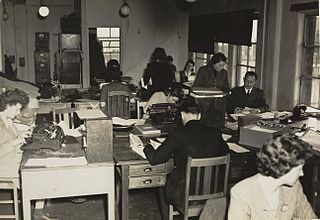 W
WThe Netherlands Indies Government Information Service (NIGIS) was a civil secret service and propaganda organisation based in Australia, during and after World War II.
 W
WOperation Binatang was an Australian covert operation conducted by the Services Reconnaissance Department (SRD) during World War Two. An agent of Z Special Unit was to be landed on the north coast of Java to recruit more men who would give active assistance to the allied cause. The operation was conceived in January 1944 but owing to the shortage of available submarines and the priority of Operation Hornbill it was delayed. When Hornbill was aborted arrangements were made for the mission to commence in February 1945.
 W
WThe Battle of Palembang was a battle of the Pacific theatre of World War II. It occurred near Palembang, on Sumatra, on 13–15 February 1942. The Royal Dutch Shell oil refineries at nearby Pladju were the major objectives for the Empire of Japan in the Pacific War, because of an oil embargo imposed on Japan by the United States, the Netherlands, and the United Kingdom after the Japanese invaded China and committed massive atrocities such as the rape of Nanking. With the area's abundant fuel supply and airfield, Palembang offered significant potential as a military base to both the Allies and the Japanese.
 W
WThe Preparatory Committee for Indonesian Independence , or PPKI was a body established on 7 August 1945 to prepare for the transfer of authority from the occupying Japanese to Indonesia. It approved and promulgated the first Indonesian constitution, and appointed Sukarno president.
 W
WThe Battle of Tarakan was the first stage in the Borneo campaign of 1945. It began with an amphibious landing by Allied forces on 1 May, code-named Operation Oboe One; the Allied ground forces were drawn mainly from the Australian 26th Brigade, but included a small element of Netherlands East Indies personnel. The main objective of the landing was capture of the island's airfield. While the battle ended with success for the Allied forces over the Japanese defenders, this victory is generally regarded as having not justified its costs. The airfield was so heavily damaged that it ultimately could not be repaired in time to make it operational for other phases of the Allied campaign in Borneo.
 W
WThe Battle of Timor occurred in Portuguese Timor and Dutch Timor during the Second World War. Japanese forces invaded the island on 20 February 1942 and were resisted by a small, under-equipped force of Allied military personnel—known as Sparrow Force—predominantly from Australia, United Kingdom, and the Netherlands East Indies. Following a brief but stout resistance, the Japanese succeeded in forcing the surrender of the bulk of the Allied force after three days of fighting, although several hundred Australian commandos continued to wage an unconventional raiding campaign. They were resupplied by aircraft and vessels, based mostly in Darwin, Australia, about 650 km (400 mi) to the southeast, across the Timor Sea. During the subsequent fighting, the Japanese suffered heavy casualties, but they were eventually able to contain the Australians.